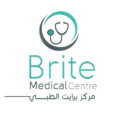For generations, rice cereal has been a top choice for babies starting solid foods, but lately there’s growing concern about what’s in it besides the rice: arsenic. UR Medicine’s Dr. Ruth Lawrence, an internationally recognized expert on breastfeeding and infant nutritional needs, offers some information and advice for parents.
 Arsenic occurs naturally in soil, air and water. Because rice is grown in water, any arsenic in the water supply binds to the rice as it grows. A known carcinogen, arsenic can influence risk of cardiovascular, immune and other diseases, and research has shown that even low levels can have a negative impact on babies’ neurodevelopment.
Arsenic occurs naturally in soil, air and water. Because rice is grown in water, any arsenic in the water supply binds to the rice as it grows. A known carcinogen, arsenic can influence risk of cardiovascular, immune and other diseases, and research has shown that even low levels can have a negative impact on babies’ neurodevelopment.
Both adults and infants are exposed to arsenic when eating rice, but it’s a bigger concern for babies. The U.S. Food and Drug Administration (FDA) says rice intake for infants, primarily through infant rice cereal, is about three times greater than for adults relative to body weight. In fact, people eat the most rice (relative to their weight) at approximately 8 months of age, a prime time for infant brain development.
The FDA recently proposed a limit of 100 parts per billion of inorganic arsenic in infant rice cereal. Their testing found that most infant rice cereals on the market either meet, or are close to, the proposed level. A JAMA Pediatrics study, published on the heels of the FDA’s recommendation, advises parents to keep an eye on the amount of cereal their babies eat. Researchers followed children for a number of years, noting the amount of rice products they ate and analyzing the arsenic levels in their urine. Babies who ate rice cereals had higher concentrations of arsenic than those who didn’t.
Here’s some advice for parents who are wondering if, why and when to consider feeding rice cereal to babies.

Ruth A. Lawrence, M.D., is a professor of Pediatrics and Obstetrics and Gynecology at the University of Rochester Medical Center, and medical director of the Ruth A. Lawrence Poison and Drug Information Center and of the Breastfeeding and Human Lactation Study Center. She is an internationally renowned expert in breastfeeding and author of Breastfeeding: A Guide for the Medical Profession, now in its eighth edition.
